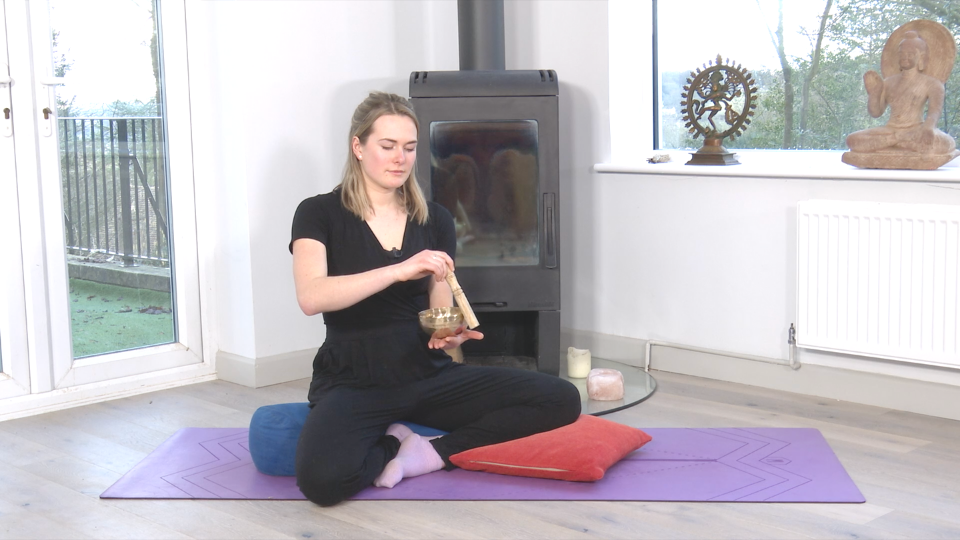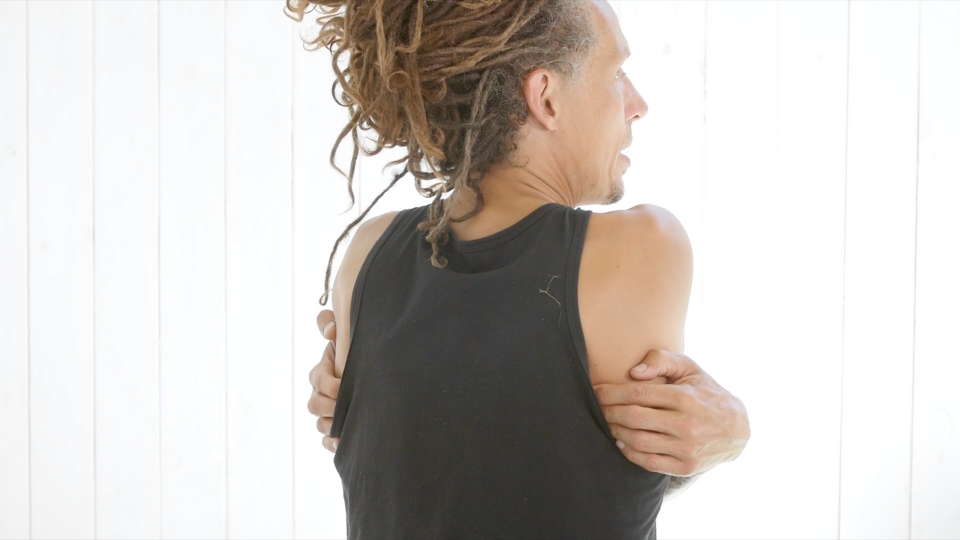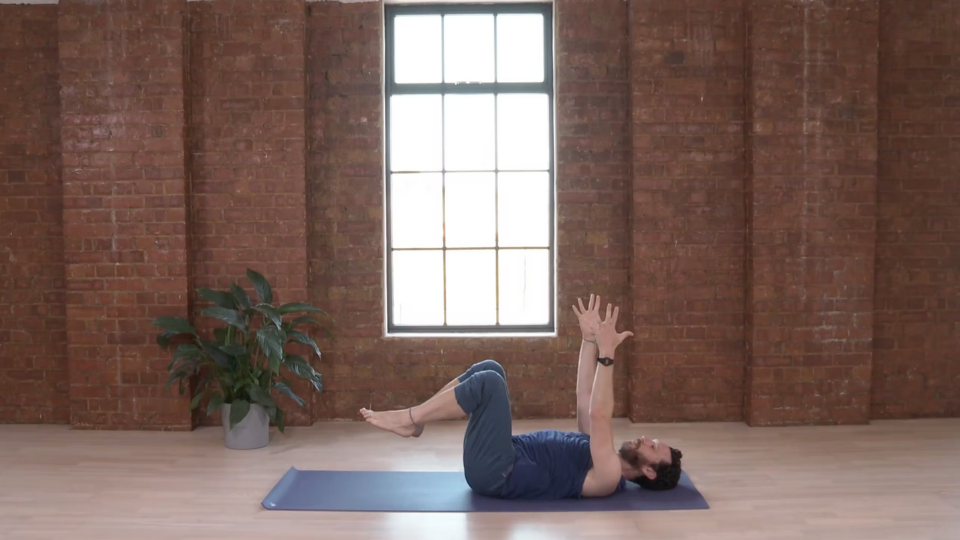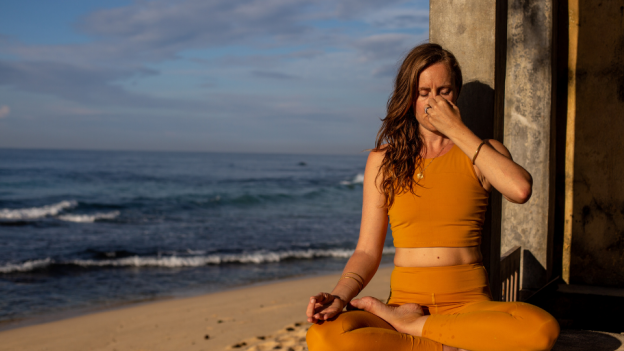
Five breathing tips, to improve the health of your lungs, that can be practiced by anyone at any time as a preventative and healing measure.
Our lungs, lung health and lung function have taken up a lot of space in the news, on social media, and in our conversations over the last couple of years. Before the coronavirus pandemic the health of our lungs was something that only concerned people ageing or with chronic respiratory diseases. The reality of Covid-19 is that it can affect anyone of any age, and it puts a huge amount of stress on our lungs. The silver lining is that through practicing Yoga for lungs, breathing tips and techniques, you can strengthen your lung capacity.
Read more about yoga for stress and anxiety in this complete guide
Understanding the Lungs
As we age it is normal that our lung function slowly decreases. There are also conditions (such as COPD and asthma) that speed up this reduction in function. However, with Covid-19 running wild, it is fair to say that more people than ever have been at risk and beginning to think about how they can take care and improve their lung health.
Healthy lungs are, of course, vital for our body to function optimally. The lungs are the place in the body where the exchange of oxygen and carbon dioxide happens. The lungs literally pump oxygen around our body, keeping it alive. As we need this oxygen to survive, the health of lungs really does impact our whole system.
Most of us have had some experience Covid-19. We know it can be very taxing for the lungs, even after the virus has passes. Luckily, research has shown it is possible to recover full lung capacity using breathing exercises.
“working toward recovery starts simple: with a focus on breathing,”
Peiting Lien, a John Hopkins physical therapist
There are many factors we can’t change when it comes to lung health, such as ageing and genetic factors. Improving the capacity of your lungs can improve overall health, as you pump your body with more of the oxygen that it needs.
“deep breathing can help restore diaphragm function and increase lung capacity.”
Peiting Lien
Whether you are recovering from the Covid-19 virus, experiencing anxiety, stress or disturbed sleep, or simply trying to improve the capacity and health of your lungs, there are exercises that can be done regularly that may reduce shortness of breath and improve respiratory health.
Regularly practicing simple exercises can help to maintain and sometimes even improve lung capacity. The question is what can you do to help improve the function of your lungs?
Five tips to improve your lung health:
- Diaphragmatic breath
Diaphragmatic breathing, or “belly breathing,” engages and strengthens the diaphragm muscles and this helps the lungs function more efficiently.
The diaphragm is a dome shaped sheet of muscle located between the chest and the abdomen. It is the diaphragm that is responsible for doing the hard work when it comes to breathing. It helps the lungs fill with air by moving down on your inhale, and then as you exhale it moves back up and pushes air out of the lungs.
While the diaphragm is supposed to be the primary breathing muscle, many of us start to unconsciously use the muscles in the neck, shoulders and back to breathe. This significantly limits the amount of air that enters and leaves the lungs.
Diaphragmatic breathing is simply focusing on the rise and fall of the abdomen with each breath. This technique is can be very beneficial for people with respiratory conditions and weakened diaphragms.
How:
- Choose your position (sitting up, laying down, standing)
- Relax your shoulders
- Place one hand on your belly and one on your chest.
- Breathe in through your nose for two seconds. Notice the air move down into your abdomen and feel your stomach move out. Focus on your stomach moving more than your chest.
- Exhale for two seconds through pursed lips. At the same time press on your abdomen in order to make sure you’re engaging your abdomen.
- Continue for a few rounds of breath
When recovering from a respiratory illness like COVID-19, it’s important to take things slow and gradually build up any breathing practices.

- Focus on Nasal breathing
Research shows how important it is to breathe through your nose. Have a listen to this Short Stuff podcast or have a read of James Nester ‘Breath, The New Science of a Lost Art’.
The theory is that your body is best equipped for breathing through your nose. Why?
- The lungs always want the warmest, moistest air possible. When you breathe through your nose the air passes by mucosa (soft tissue) that keeps the air moist.
- On top of that the Scillia are the hairs inside your nose. When you breathe through your nose and the air passes by the scillia they filter out anything that shouldn’t travel down into the lungs.
- Nose breathing encourages diaphragmatic breathing which activates the lower lobes of the lungs. This activates oxygenates more blood, and that helps send more oxygen around your body.
- Nitric oxide is released from nasal breathing. Nitric oxide is a vasodilator, this means it opens up your blood vessels and improves blood flow. This reduces your blood pressure and as a result you can often feel calmer after breathing through your nose.

- Singing and humming
Singing and humming works the abdominal muscles. When you sing you lengthen the notes by lengthening your exhale. Singing, like laughing, forces stale air out the lungs and makes space for fresh air to enter. The extended exhale strengthens the diaphragm muscle, which increases lung capacity.
Try: Bumble bee breath
Humming is a form of nasal breathing, and this releases nitric oxide. This sends more oxygen around the body, and is also soothing, it reduces stress and calms the nervous system.
- Sit comfortably
- Put your hands around the sides of your stomach.
- With your lips closed and your tongue on the roof of your mouth, breathe in through your nose and breath down into the stomach. Try to spread your fingers apart with your breath.
- Once your lungs are full, keep your lips closed and exhale while humming, making the “hmmmmmm” sound. Notice how your hands lower back down.
- Repeat for one minute.

- Effortless Breath – Make space in the ribcage and chest
Often we think that to breathe ‘well’ we need to breathe deep. In actual fact less can be more, and breathing with little effort can gently strengthen the lungs and ease space into the tissues surrounding the ribcage and chest.
Freeing up the ribcage and upper chest is a great way to expand the space available for your lungs and help you to take in as much air as possible.
This practice uses effortless breath combined with hand contact, to focus and create space in the sides of the ribs, front of the ribs, back of the ribs, and chest.
In each position and hand placement, tune into the expansion into your hands to notice the space you create for more air to enter and leave the body.

- Increase general activity level
One important factor in improving lung health is increasing overall daily activity. Doing some cardiovascular exercise such as a fast walk or going cycling, can improve your lung health, heart health and also mood and energy levels.
Studies have shown that just 30 minutes of strenuous activity a day can have a profound effect on lung health and can increase the capactiy you have to inhale and exhale.
It’s important to listen to your body, especially if you’re exercising with respiratory conditions. Exercise at a pace that feels manageable and that you are able to maintain. It is better to be active for a short time every day, than to push too hard once a week.

Read more in Yoga for Stress and Anxiety: A Complete Guide
Take care and listen to your body
Whilst all these exercises are beneficial for people with respiratory conditions, recording from Covid-19 and those with reduced lung function, the truth is that everyone can do these exercises, even when their lungs are healthy. Regularly practising these exercises can build lung strength and resilience.
Having said that, if you have a chronic lung disease, we strongly recommend you consult with your doctor before starting something new.
Remember these practices rarely produce immediate results. The key is to be patient and persistent and the benefits will come over time.
Find tips to help keep up motivation and a daily yoga practice!
Written by Joanna Gilbert – MFML’s Happiness Maven!
Try the Ten day Breath Challenge with Dan Peppiatt
A ten day discovery into different breath work techniques. Your breath really is key to understanding your physiology, how you feel, your mood and how you respond to things. Learn simple techniques to ‘trick’ your body into feeling calmer, more relaxed or more energised, by learning how to change your breath.






I found this article on improving lung health through breathing tips to be highly informative and practical. The author sheds light on the increased awareness of lung health due to the Covid-19 pandemic and emphasizes the importance of taking care of our lungs. The provided breathing exercises, such as diaphragmatic breathing, nasal breathing, singing and humming, creating space in the ribcage and chest, and increasing general activity levels, offer actionable steps for readers to enhance their lung function. I appreciate the inclusion of class suggestions, as it provides further guidance for individuals looking to incorporate these exercises into their routine. The reminder to listen to our bodies and consult a doctor, especially for those with chronic lung diseases, adds a responsible and cautious approach. Overall, this article serves as a valuable resource for anyone seeking to prioritize their lung health and strengthen their respiratory well-being.
Thank you for this lovely review Donald! Glad you have benefited from the article on lung health. I hope you can continue to use some of these techniques in your day to day life.